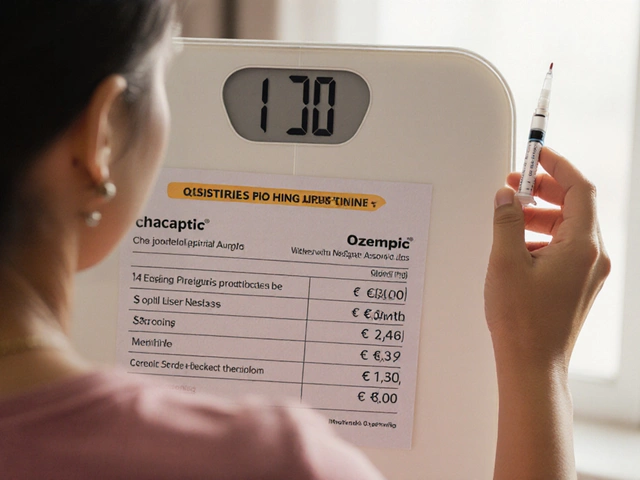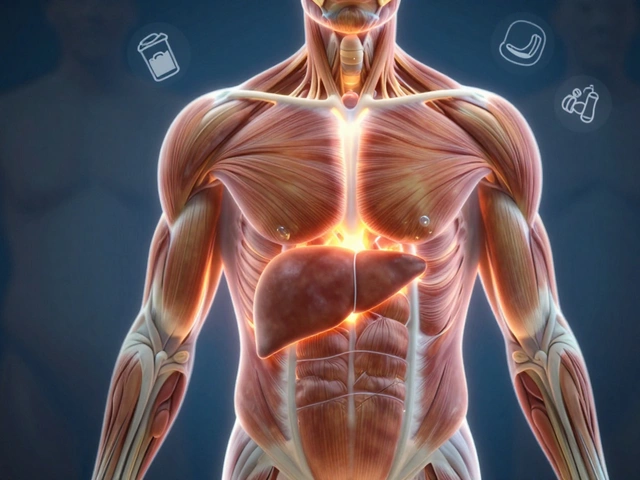So you just had knee surgery, and your surgeon says, “Hold off on showers for at least a week.” It sounds simple, but let’s be real—nobody likes feeling grubby, especially after being stuck in bed. But there’s a good reason you’re told to wait.
When your knee is freshly stitched up, that incision is super sensitive. Water—especially from a shower—does more than just rinse dirt away. It can carry bacteria right into your wound, undoing all the care taken during surgery. Infections after knee replacements aren't just annoying; they can send you back to the hospital or even mess up the whole new joint. That’s why doctors give strict instructions.
I remember when my son Aarav broke his leg and had surgery—the whole family was itching to help him scrub off the hospital smell. But we had to settle for sponge baths and quick wipes. It’s not glamorous, but it works. Usually, doctors recommend sponge baths or special wipes around your incision, making sure to keep the spot dry and untouched.
- What Happens to Your Knee During Surgery?
- Why Water and Fresh Incisions Don't Mix
- Risks If You Do Shower Too Soon
- How to Stay Clean Without a Shower
- Signs of Trouble: Watch That Wound
- When Can You Shower Again Safely?
What Happens to Your Knee During Surgery?
If you’ve never had knee surgery, the whole thing might sound intimidating. Here’s what actually goes down in that operating room. For a typical knee surgery like a knee replacement, the surgeon first makes a cut along the front of your knee. This incision is usually about 6–10 inches long, depending on your knee size and the surgeon’s style.
Next, the damaged joint surfaces—usually the ends of your femur (thigh bone) and tibia (shin bone)—are carefully cleaned out. The surgeon removes the worn-down cartilage and some bone. Then they fit the specialized metal and plastic parts to replace the damaged areas.
If you’re curious about the nitty-gritty, check out these quick facts:
- The entire procedure takes about 1–2 hours, but you’ll spend extra time in pre-op and recovery.
- Most people lose about 300–500 mL of blood during the surgery (so yes, you might feel wiped afterward).
- Nerves and blood vessels are pushed to the side with care, but the tissues still get a lot of trauma—causing swelling and bruising afterward.
Your knee is flushed with a sterile solution several times throughout to clear away bone and tissue debris. But, once stitched back up, it’s a different story: the incision area is extremely vulnerable until it gets a good head start on healing.
Here’s a quick table with the stats people usually ask about:
| What Happens | Details |
|---|---|
| Incision Size | 6–10 inches |
| Time in Surgery | 1–2 hours |
| Blood Loss | 300–500 mL |
| Hospital Stay | 1–3 days (on average) |
Once the hardware is in and the wound is closed, the healing begins—but that cut is far from waterproof. This vulnerable phase is exactly why showering is put on hold. Even a little bit of water finding its way inside can be a big problem.
Why Water and Fresh Incisions Don't Mix
Right after knee surgery, your incision basically works like an open door. Even though it’s stitched or glued shut, the skin there hasn’t sealed itself completely. Water might look clean, but it can bring bacteria and dirt right into that wound. If any of that gets in, you’re looking at possible infections, wound breakdown, or even more doctor visits—and nobody wants to deal with that after surgery.
There’s hard evidence supporting surgeons’ strict shower rules. Studies show that when water gets into new incisions, the infection risk jumps up fast. The skin usually needs about 7-14 days to build a solid barrier again, depending on your health, the surgical wound, and how you’re healing. During this window, the tissue is fragile and more likely to break down if it gets wet.
Some folks think water is harmless because they use 'clean' tap water, but hospital germs don’t always play by our rules. Showers pump water at pressure, which can force moisture deep through stitches or glue, making problems even worse. Hot water, by the way, can also cause swelling around the site, slowing down healing.
Here’s a quick look at what can go wrong if you ignore that no-shower order:
- Infection—by far the biggest risk, sometimes needing more surgery or IV antibiotics
- Delayed healing, so you’re stuck off your feet longer
- Stitches or surgical glue breaking down quicker than they should
- Scarring or thickened incision lines if healing gets disrupted
Doctors don’t just say no showers out of habit. They know that even a little water can keep a surgical wound from sealing and make your knee recovery much harder.
| Factor | After Surgery (First 14 Days) | Once Wound is Healed |
|---|---|---|
| Skin Barrier | Weak & water-permeable | Strong & protective |
| Infection Risk | High | Low |
| Safe to Get Wet? | No | Yes |
Bottom line? Water and fresh incisions are a bad mix if you want your new knee and that scar to heal right the first time.
Risks If You Do Shower Too Soon
Showering before your knee incision heals can open you up to a bunch of problems, some of which can drag out recovery for months. The most obvious risk is infection. Water from your shower isn’t as clean as it looks—and the pressure from the spray can push germs right into your surgical wound. Hospital infection rates after knee surgery sit at about 1-3%, but getting your wound wet early can push those odds up. Trust me, you don’t want to land in that unlucky group.
Here’s a breakdown of what can go wrong if you can’t resist hopping in the shower too soon:
- Knee surgery wounds don’t seal up instantly. If water runs over the incision, you risk it opening or not closing properly, leading to delayed healing.
- If germs sneak in, you might get redness, swelling, or pus. That’s not just gross—it can mean a return trip for extra treatment or another surgery.
- Wet surgical bandages make a playground for bacteria. They break down faster and stop protecting your knee.
- There’s also the chance of slipping. It’s easy to lose your balance in the shower when you’re not steady on your feet, and a fall can undo all that careful work done in the operating room.
Take a look at what happens if you don't wait the recommended time:
| Risk | Chance with Early Shower | What It Means |
|---|---|---|
| Wound Infection | Up to 2x higher | Extra antibiotics, possible reoperation |
| Wound Breakdown | Much higher | Longer healing, more pain |
| Falling | Common in first week post-op | Possible injury to the new joint |
Doctors don’t just make up these rules—patients who skip them are the ones who end up needing more care. So, if you’re desperate for a clean feeling, just remember: a little patience now saves you from a whole lot of hassle down the line.

How to Stay Clean Without a Shower
Missing your regular shower after knee surgery can make daily life feel pretty uncomfortable. But doctors aren’t trying to torture you by banning it—they’re protecting your stitches. Staying clean while keeping your incision dry is easier, and more important, than you might think.
Sponge baths are the go-to option for anyone recovering from knee surgery. Here’s how to stretch things out between real showers without feeling like you just rolled out of a gym bag:
- Gather supplies first: Get a bowl of warm water, a clean washcloth, mild soap, and a towel. If you want to level up, pick up some fragrance-free, alcohol-free wipes made for sensitive skin from the pharmacy—they’re a lifesaver when you don’t want to fuss with water near your bandages.
- Protect your incision: Before doing anything, make sure your surgical area and bandages stay completely dry. If someone is helping you, remind them every minute—better safe than sorry! Even a few drops can be risky. Some folks wrap the leg in plastic wrap; others just keep the leg away from the bowl. Do whatever works as long as the wound stays dry.
- Wipe down gently: Focus on areas that actually get sweaty: armpits, neck, face, groin, and feet. No need to scrub—just wipe, pat dry, and move on.
- Change clothes and sheets: Fresh clothes—even just underwear and shirt—can make you feel a lot better. Same goes for pillowcases or bedsheets; don’t underestimate that clean-sheet feeling.
- Watch for signs of skin irritation: If you notice redness, itching, or rash near the surgical dressing, let your doctor know. Sometimes even gentle wipes can cause a reaction.
For folks with reduced mobility after a knee replacement, sitting on a sturdy, non-slip chair makes everything easier and safer when cleaning up. And if balance is tricky, ask someone you trust to help—believe me, most people want to help, and it beats risking a fall.
Want some real-world numbers? Here’s a quick look at how important keeping the incision dry is after knee surgery:
| Action | Infection Risk (%) |
|---|---|
| Proper care, dry wound (no showers, sponge baths only) | 1-2% |
| Wet wound (showering too soon) | 5-10% |
See that spike? That’s why this common instruction matters so much. It barely takes a week or two before your doctor usually gives the green light for real showers. Until then, just think of this as a pit stop—before you get back up to full speed.
Signs of Trouble: Watch That Wound
After knee surgery, that new incision is basically a front door to your insides. Protecting it is priority one. So what do you actually need to watch for? Ignoring red flags can lead to nasty infections or delay your recovery entirely.
Be on the lookout for these real-deal warning signs:
- Redness or swelling that’s spreading: A little redness right around the incision is normal, but if it looks like the redness is getting bigger or puffier each day, that’s a problem.
- Warmth that won’t go away: If the skin around your incision feels hot to the touch, way more than the rest of your knee, it could mean an infection is brewing below the surface.
- Yellow or green drainage: Clear fluid is pretty normal after surgery, but yellow, green, or foul-smelling stuff is a big warning sign. Blood that won’t stop can be trouble too.
- Fever: If you spike a fever (over 101°F/38.3°C), especially along with the other signs above, it’s time to call your doctor. Sometimes infections start slow and then get serious fast.
- Extreme pain: Some pain is, of course, part of knee surgery. If it suddenly ramps up or feels different, let your surgeon know.
Also, if your incision pops open or the stitches start coming loose, don’t try to patch it yourself. Get medical help. When in doubt, it’s safer to check in with your doc instead of ignoring things. Keeping your knee surgery wound dry and clean gives you the best shot at healing up smooth and simple.
When Can You Shower Again Safely?
The golden question after knee surgery: when can you finally have a real shower without freaking out about infection or ruining your stitches? Most surgeons say you need to wait until the wound is sealed up—usually about 7 to 10 days, depending on how your body is healing and whether you have stitches, staples, or surgical glue.
Here's the deal: if you’ve got a waterproof dressing (the fancy clear kind that sticks tightly over your incision), sometimes your doctor will tell you it’s fine to shower after just a couple of days. But if it’s just plain bandages, you’ve got to keep everything dry. Never decide by yourself—always double-check with your surgeon first, because everyone heals at their own speed. Older folks, folks with diabetes, or anyone who's had complications might have to wait even longer.
- Check the dressing—If it’s loose, wet, or peeling up, don't shower.
- Confirm with your doctor—Most will schedule a post-op visit within a week, and that's the perfect time to ask, "Can I shower yet?"
- Skip soaking—No baths, pools, or hot tubs until the wound is totally closed and your doctor gives the all-clear.
When you finally do get the green light, avoid standing under a strong shower spray that hammers directly onto your incision. Let water run down gently, use mild soap, and pat the area dry—don’t rub. If you’re wobbly, a shower stool or help from a family member can make things a lot less stressful. I had to play lifeguard for Vanya when she got her cast removed, just to make sure there were no slips.
Your doctor isn’t being dramatic—just one careless shower can lead to big problems, especially when it comes to bacteria. Be patient. Staying careful now saves you pain and hospital trips later.










